USSR
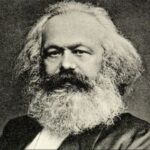
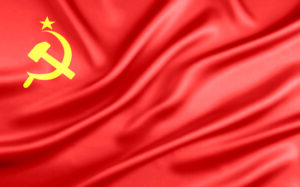 There are a number of different kinds of governments, and people disagree on which is the best. Personally, I think that any government that takes away the freedoms of its people is destined to fail. Communism is a “political theory derived from Karl Marx, advocating class war and leading to a society in which all property is publicly owned, and each person works and is paid according to their abilities and needs.” Communism is also, known as Marxism, which is defined as “the political and economic theories of Karl Marx and Friedrich Engels, later developed by their followers to form the basis for the theory and practice of communism.” I don’t think most people know the real meaning of Marxism or Communism, or, for that matter, Socialism, which is “a political and economic theory of social organization which advocates that the means of production, distribution, and exchange should be owned or regulated by the community as a whole.” If people knew what these types of governments are really like, they would fight to keep them out of their countries. The problem is that people think the government will take care of them, and that they will benefit from the work of others. It never works that way. everyone in these situations gets poorer, except for the government.
There are a number of different kinds of governments, and people disagree on which is the best. Personally, I think that any government that takes away the freedoms of its people is destined to fail. Communism is a “political theory derived from Karl Marx, advocating class war and leading to a society in which all property is publicly owned, and each person works and is paid according to their abilities and needs.” Communism is also, known as Marxism, which is defined as “the political and economic theories of Karl Marx and Friedrich Engels, later developed by their followers to form the basis for the theory and practice of communism.” I don’t think most people know the real meaning of Marxism or Communism, or, for that matter, Socialism, which is “a political and economic theory of social organization which advocates that the means of production, distribution, and exchange should be owned or regulated by the community as a whole.” If people knew what these types of governments are really like, they would fight to keep them out of their countries. The problem is that people think the government will take care of them, and that they will benefit from the work of others. It never works that way. everyone in these situations gets poorer, except for the government.
The Union of Soviet Socialist Republics (USSR) was established in post-revolutionary Russia, on December 30, 1922. It combined Russia, Belorussia, Ukraine and the Transcaucasian Federation (which was divided in 1936 into the Georgian, Azerbaijan and Armenian republics). The new nation was also known as the Soviet Union. It was the successor to the Russian Empire and the first country in the world to be based on Marxist socialism. The rest of the world was rather stunned that this kind of regie actually existed, because it took away so many freedoms and personal property, and the people had no choice.
Because Russia was reeling from the Russian Revolution of 1917 and subsequent three-year Russian Civil War, the Bolshevik Party under Vladimir Lenin dominated the soviet forces. A coalition of workers’ and soldiers’ committees called for the establishment of a socialist state in the former Russian Empire. It was from there that the USSR was formed, and after that, all levels of government were controlled by the Communist Party, and the party’s Politburo, with its increasingly powerful general secretary, who effectively ruled the country. Everything, from Soviet industry was owned and managed by the state, and agricultural land was immediately confiscated and divided into state-run collective farms.
Over the coming decades, the Russian-dominated Soviet Union grew into one of the world’s most powerful and influential states. It eventually encompassed 15 republics…Russia, Ukraine, Georgia, Belorussia, Uzbekistan, Armenia, Azerbaijan, Kazakhstan, Kyrgyzstan, Moldova, Turkmenistan, Tajikistan, Latvia, Lithuania and Estonia. 
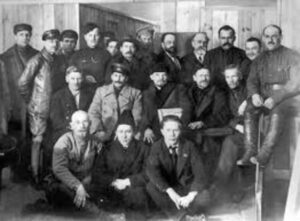 The USSR, as many knew it must, eventually failed because you can’t place people into a slave state without eventual rebellion. In 1991, the Soviet Union was dissolved following the collapse of its communist government. Communism, Marxism, and Socialism simply won’t work in the long run. If a nation wants growth and prosperity, they must have capitalism, so that the people have the incentive to be entrepreneurs, inventors, scientists, and so many other occupations in which discovery is made. Without incentive, people will simply quit.
The USSR, as many knew it must, eventually failed because you can’t place people into a slave state without eventual rebellion. In 1991, the Soviet Union was dissolved following the collapse of its communist government. Communism, Marxism, and Socialism simply won’t work in the long run. If a nation wants growth and prosperity, they must have capitalism, so that the people have the incentive to be entrepreneurs, inventors, scientists, and so many other occupations in which discovery is made. Without incentive, people will simply quit.

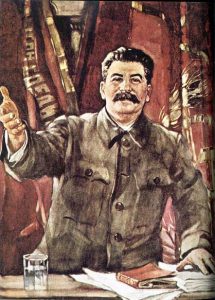 Generally speaking, a man’s word is his bond…as the saying goes, but when a man’s word can’t be trusted, well promises mean nothing, agreements mean nothing, partnership means nothing. The people who took Adolf Hitler at his word, found out the hard way, that Hitler was definitely not a man of his word. On June 22, 1941, after making an agreement, known as the Nazi-Soviet Pact of 1939, Nazi Germany at Hitler’s command, launched a massive invasion against the USSR. The agreement was basically that Germany and the USSR would not attack each other. Less than two years into the agreement, Hitler broke the agreement. He was most likely planning that invasion all along, but he needed to have the people of the USSR unaware of his plans. He needed to have them trust him, so his invasion would be a complete surprise attack.
Generally speaking, a man’s word is his bond…as the saying goes, but when a man’s word can’t be trusted, well promises mean nothing, agreements mean nothing, partnership means nothing. The people who took Adolf Hitler at his word, found out the hard way, that Hitler was definitely not a man of his word. On June 22, 1941, after making an agreement, known as the Nazi-Soviet Pact of 1939, Nazi Germany at Hitler’s command, launched a massive invasion against the USSR. The agreement was basically that Germany and the USSR would not attack each other. Less than two years into the agreement, Hitler broke the agreement. He was most likely planning that invasion all along, but he needed to have the people of the USSR unaware of his plans. He needed to have them trust him, so his invasion would be a complete surprise attack.
When he was ready, and aided by his far superior air force, Hitler sent his German army racing across the Russian plains. The German Army was given carte blanche in the invasion, and so they went about inflicting terrible casualties on the Red Army and the Soviet civilians. Of course, the German Army wasn’t alone in their attack. Their first targets of attack were Leningrad and Moscow. With the assistance of troops from their Axis allies, the Germans conquered the vast territory, and by mid-October the great Russian cities of Leningrad and Moscow were under siege. The Soviets held on, and the coming winter forced the German offensive to pause.
Hitler set his sights on the summer of 1942, and ordered the Sixth Army, under General Friedrich Paulus, to take Stalingrad in the south. Stalingrad was an industrial center and therefore, an obstacle to Nazi control of the precious Caucasus oil wells. The oil wells were a crucial part of the control process. The Army made advances across the Volga River in August, while the German Fourth Air Fleet reduced Stalingrad to burning rubble, killing more than 40,000 civilians. With the first attack behind them, Paulus ordered the first offensives into Stalingrad in September, estimating that it would take his army about 10 days to capture the city.
The ensuing battle was one of the most horrific battles of World War II. It was also quite likely the most important because it was the turning point in the war between Germany and the USSR. The USSR’s Red Army was furious and had an ax to grind over the ruined city and their lost loved ones and friends. Now, the German Sixth Army faced General Vasily Chuikov leading a bitter Red Army seeking revenge. They quickly transformed destroyed buildings and rubble into natural counter offensive fortifications. Then, using a method of fighting known as the Rattenkrieg or “Rat’s War,” the opposing forces broke into squads eight or 10 strong and fought each other for every house and yard of territory. The battle saw rapid advances in street-fighting technology. Things like a German machine gun that shot around corners and a light Russian plane that glided silently over German positions at night, dropping bombs without warning were birthed during this battle. The biggest problem the armies faced, however, was a lack of necessary food, water, or medical supplies, causing tens of thousands of soldiers to die every week.
The biggest miscalculation Hitler made was the resolve of Soviet leader Joseph Stalin, who was determined to liberate the city named after him. In November he ordered massive reinforcements to the area. On November 19, General Zhukov launched a great Soviet counteroffensive. German command underestimated the scale of the counterattack, and the Sixth Army was quickly overwhelmed by the offensive, which involved 500,000 Soviet troops, 900 tanks, and 1,400 aircraft. Within three days, the entire German force of more than 200,000 men was encircled. Before long, the Italian and Romanian troops at Stalingrad surrendered. That didn’t follow for the Germans, who hung on. Of course, Hitler would not let them surrender, so they waited…receiving limited supplies by air and waiting for reinforcements. Hitler ordered Paulus to remain in place and promoted him to field marshal, because no Nazi field marshal had ever surrendered.
The Germans lost as many lives to starvation and the bitter Russian winter, as they did to the merciless Soviet troops. Their supply line was completely cut off on January 21, 1943, when the last of the airports held by the Germans fell to the Soviets…completely cutting off their supplies. Despite Hitler’s threats, Paulus surrendered German forces in the southern sector on January 31, and on February 2 the remaining German troops surrendered. By the time Paulus surrendered, there were only 90,000 German soldiers still alive. They may 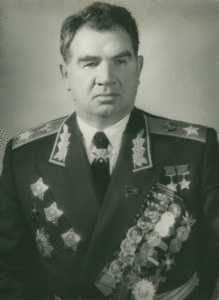
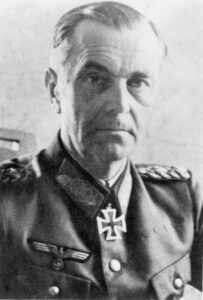 have thought they were among the lucky ones, but of the 90,000, only 5,000 survived the Soviet prisoner-of-war camps and make it back to Germany.
have thought they were among the lucky ones, but of the 90,000, only 5,000 survived the Soviet prisoner-of-war camps and make it back to Germany.
The Battle of Stalingrad was the turning point in the war between Germany and the Soviet Union. Chuikov had played such an important role in the victory. Later, it was he who led the Soviet drive on Berlin. As a reward, on May 1, 1945, he was given the right to personally accept the German surrender of Berlin. Paulus, who felt betrayed by Hitler, was among the German prisoners of war in the Soviet Union. He provided testimony at the International Military Tribunal at Nuremberg in 1946. After his release by the Soviets in 1953, he settled in East Germany.
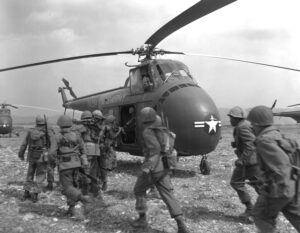 Most wars are nation against nation or against nations, but some wars split a nation in two…literally. Such was the case in Korea, which was once one nation, and after the war, became two nations. It seems like no matter which nation invades the other, or the other half, the invading nation is always trying to enslave the other nation or the other half of the nation. In the case of Korea, South Korea wanted to be a Democratic nation, and North Korea wanted to be a Communist nation. They have been fighting about their differences for years. That is simply a fight, South Korea couldn’t afford to lose, and really, North Korean people didn’t want communism either. Anyone who studies socialism and communism is clearly able to see that neither of these forms of government benefit the people of the nation. They just benefit the government. The nation split into two nations, and it was a battle to hold off North Korea from that day forward.
Most wars are nation against nation or against nations, but some wars split a nation in two…literally. Such was the case in Korea, which was once one nation, and after the war, became two nations. It seems like no matter which nation invades the other, or the other half, the invading nation is always trying to enslave the other nation or the other half of the nation. In the case of Korea, South Korea wanted to be a Democratic nation, and North Korea wanted to be a Communist nation. They have been fighting about their differences for years. That is simply a fight, South Korea couldn’t afford to lose, and really, North Korean people didn’t want communism either. Anyone who studies socialism and communism is clearly able to see that neither of these forms of government benefit the people of the nation. They just benefit the government. The nation split into two nations, and it was a battle to hold off North Korea from that day forward.
On June 27, 1950, President Harry S Truman announced that he is ordering United States Air and Naval forces to South Korea to aid the democratic nation in fighting off an invasion by communist North Korea. The Korean War had begun, and it would rage on until July 27, 1953. Truman explained that the United States was undertaking the major military operation to enforce a United Nations resolution calling for an end to hostilities, and to stem the spread of communism in Asia. Truman also sent the United States 7th Fleet to Formosa (Taiwan) to fend of any possible invasion by communist China and ordered increased military aid to French forces who were fighting communist guerrillas in Vietnam. Communism (and Socialism too) is a poison and a killer. It robs the nation of any kind of freedom. People are no longer able to do business as they would like to, but are rather at the mercy of the government business choices, and then the government takes what they make anyway.
At the Yalta Conference toward the end of World War II, Korea was split into North and South Korea when the United States, the USSR, and Great Britain agreed to divide Korea into two separate occupation zones. Split along the 38th parallel, the Soviet forces occupied the northern zone and the Americans were stationed in the south. In 1947, the United States tried to institute free elections, but the Soviets wouldn’t agree to it. In May of 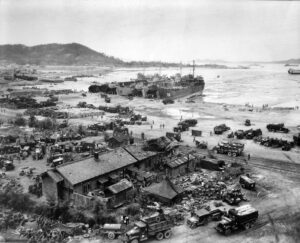 1948, the communist state of the Korean Democratic People’s Republic was established in North Korea. In August, the Democratic Republic of Korea was established in South Korea. By 1949, both the United States and the USSR had withdrawn the majority of their troops from the Korean Peninsula.
1948, the communist state of the Korean Democratic People’s Republic was established in North Korea. In August, the Democratic Republic of Korea was established in South Korea. By 1949, both the United States and the USSR had withdrawn the majority of their troops from the Korean Peninsula.
Unfortunately, that didn’t solve the problem, and likely exacerbated it. Without the controls they had placed, things quickly got bad again, and at dawn on June 25, 1950, which is still June 24 in the United States and Europe, approximately 90,000 communist troops of the North Korean People’s Army invaded South Korea across the 38th parallel. The move caught the Republic of Korea’s forces completely off guard and threw them into a hasty southern retreat. That afternoon, the UN Security Council met in an emergency session and approved a US resolution calling for an “immediate cessation of hostilities” and the withdrawal of North Korean forces to the 38th parallel. At the time, the USSR was boycotting the Security Council over the UN’s refusal to admit the People’s Republic of China and so missed its chance to veto this and other crucial UN resolutions.
On June 27th, when President Truman announced to the nation and the world that America would intervene in the Korean conflict in order to prevent the conquest of an independent nation by communism, he was also suggesting that the USSR was behind the North Korean invasion, and in fact the Soviets had given tacit approval to the invasion, which was carried out with Soviet-made tanks and weapons. There was concern that US intervention would lead to open warfare between the United States and Russia after years of “cold war.” Nevertheless, Truman’s decision was met with overwhelming approval from Congress and the US public. Truman did not ask for a declaration of war, but Congress voted to extend the draft and authorized Truman to call up reservists. Everyone knew it was inevitable.
On June 28, the Security Council met again. The Soviet Union was still boycotting, and so, in their absence, the council passed a US resolution approving the use of force against North Korea. On June 30, Truman agreed to 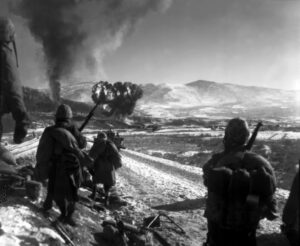 send US ground forces to Korea, and on July 7 the Security Council recommended that all UN forces sent to Korea be put under US command. The next day, General Douglas MacArthur was named commander of all UN forces in Korea. The Korean war was underway, and before it was over, South Korea, the United States, and their allied casualties included 170,927 dead and 32,585 missing (162,394 South Koreans, 36,574 Americans, 4,544 others), with a total of 566,434 wounded. North Korea and their allied casualties included 398,000–926,000 dead and 145,000+ missing (335,000–526,000 North Koreans, 208,729–400,000 Chinese, 299 Soviet), and a total of 686,500 wounded.
send US ground forces to Korea, and on July 7 the Security Council recommended that all UN forces sent to Korea be put under US command. The next day, General Douglas MacArthur was named commander of all UN forces in Korea. The Korean war was underway, and before it was over, South Korea, the United States, and their allied casualties included 170,927 dead and 32,585 missing (162,394 South Koreans, 36,574 Americans, 4,544 others), with a total of 566,434 wounded. North Korea and their allied casualties included 398,000–926,000 dead and 145,000+ missing (335,000–526,000 North Koreans, 208,729–400,000 Chinese, 299 Soviet), and a total of 686,500 wounded.
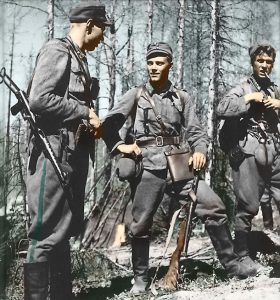 On June 26, 2003, a Green Beret was laid to rest at Arlington National Cemetery. That may not seem like such an unusual event, but in reality, it was very unusual. Lauri Allan Torni, aka Larry Thorne, was born in Viipuri, Finland on May 28, 1919. When he grew up, he entered the Finnish military service in 1938. He participated in the war between Finland and the USSR, proving himself in battle, and earning the rank of captain. It would appear that Torni would quite likely have a long and distinguished career in the military service.
On June 26, 2003, a Green Beret was laid to rest at Arlington National Cemetery. That may not seem like such an unusual event, but in reality, it was very unusual. Lauri Allan Torni, aka Larry Thorne, was born in Viipuri, Finland on May 28, 1919. When he grew up, he entered the Finnish military service in 1938. He participated in the war between Finland and the USSR, proving himself in battle, and earning the rank of captain. It would appear that Torni would quite likely have a long and distinguished career in the military service.
All that changed when Finland allied itself with Nazi Germany in 1941. In 1943, Torni put together a unit that was informally called Detachment Torni. This was an infantry unit that penetrated deep behind enemy lines, and they quickly made a reputation for themselves on both sides of the front for its combat effectiveness. For his part, Torni, for his Finnish military service was awarded 8 medals, to include the Mannerheim Cross, for action on July 9, 1944.
When his unit was demobilized, Torni joined a German SS unit in East Prussia and continued to fight the Russians, who at that time were the known enemy. During his time in the German SS, Torni was captured by the British, escaped a POW camp, and returned to Finland, where he was arrested for his German army service. I’m sure that at this point he wondered what was going on. I would think he realized the the German SS was his whole problem, but like many, he was fooled by Hitler and the Nazi party. After being pardoned in 1948, Torni secretly traveled to Sweden, masqueraded as a Swedish seaman, and sailed to the vicinity of Mobile, Alabama,  where he jumped overboard and made it to land. As most people know, getting to land was an opportunity to seek asylum, which Torni did. He was granted residency in 1953 and because he wanted to be loyal to his new country, Torni, now going by Larry Thorne joined the Army. Again, he proved himself in battle, and eventually became a Green Beret assigned to Special Forces. Torni, now Thorne was an incredible soldier, and very loyal to his nation and his fellow soldiers. He served in various high profile capacities around the world in his time of service as a Green Beret.
where he jumped overboard and made it to land. As most people know, getting to land was an opportunity to seek asylum, which Torni did. He was granted residency in 1953 and because he wanted to be loyal to his new country, Torni, now going by Larry Thorne joined the Army. Again, he proved himself in battle, and eventually became a Green Beret assigned to Special Forces. Torni, now Thorne was an incredible soldier, and very loyal to his nation and his fellow soldiers. He served in various high profile capacities around the world in his time of service as a Green Beret.
In 1963 when he was 44 years old, Thorne was deployed to Vietnam as an advisor, but two years later Torni’s remarkable career came to an end when his helicopter crashed during a secret mission. It was a tragic end to a short lived, be remarkable career. His remains were not located until 1999. Finally, on June 26, 2003, a multi-national hero and in the end, a celebrated Green Beret was laid to rest. He was an amazing soldier.
 Every time I learn anything about Adolf Hitler, I am stunned that so much evil could exist in one man. World War II technically started when Adolf Hitler invaded Poland. Hitler told his men that “it did not matter who was right or wrong, that in fighting a war, coming out triumphant is the only thing that counted.” He urged his men to have no sympathy for their opponent. On September 1, 1939, Hitler ordered the invasion of Poland, by ordering the attack of defenseless civilians. In this way, they put the citizens in a state of shock. The sky was dark and there were dead bodies everywhere. Once Germany invaded Poland, it opened a door to allow the Soviets to also invade Poland. Of course, this was not exactly what either country wanted.
Every time I learn anything about Adolf Hitler, I am stunned that so much evil could exist in one man. World War II technically started when Adolf Hitler invaded Poland. Hitler told his men that “it did not matter who was right or wrong, that in fighting a war, coming out triumphant is the only thing that counted.” He urged his men to have no sympathy for their opponent. On September 1, 1939, Hitler ordered the invasion of Poland, by ordering the attack of defenseless civilians. In this way, they put the citizens in a state of shock. The sky was dark and there were dead bodies everywhere. Once Germany invaded Poland, it opened a door to allow the Soviets to also invade Poland. Of course, this was not exactly what either country wanted.
Before the end of the month, on September 29, 1939, Germany and the Soviet Union agree to divide control of occupied Poland roughly along the Bug River, with the Germans taking everything west, and the Soviets taking everything east. The people of Poland were given away like slaves. In addition, as a follow-up to the Molotov-Ribbentrop Pact, which was also known as the Hitler-Stalin Pact, a non-aggression treaty was created between the two huge military powers of Germany and the USSR. The German foreign minister, Joachim von Ribbentrop met with his Soviet counterpart, VM Molotov, to sign the German-Soviet Boundary and Friendship Treaty. Of course, the “friendship” did not extend to the Polish people.
As in normal in any contract, there was “fine print” in this agreement too. The fine print of the original non-aggression pact had promised the Soviets a slice of eastern Poland. It was to be a small part, simply a matter of agreeing where to draw the lines. Joseph Stalin, Soviet premier and dictator, personally drew the line that partitioned Poland. He originally wanted it drawn at the River Vistula, just west of Warsaw. In the end, he agreed to pull it back east of the capital and Lublin, giving Germany control of most of Poland’s most heavily populated and industrialized regions. In exchange, Stalin wanted Lvov, and its rich oil wells, and Lithuania, which sits atop East Prussia. Germany was fine with that, because now they had 22 million Poles, “slaves of the Greater German Empire,” at its disposal…and Russia had a western buffer zone.
On this same day, the Soviet Union also signed a Treaty of Mutual Assistance with the Baltic nation of Estonia, giving Stalin the right to occupy Estonian naval and air bases. What was thought to be a buffer zone, seems more like a land grab to me. A similar treaty would later be signed with Latvia. These nations really didn’t seem to realize what they were getting into. Eventually, Soviet tanks rolled across these borders, in the name of “mutual assistance,” placing the Baltic States under the rule of the USSR for decades to come. These so called treaties were once again merely the realization of more fine print from the Ribbentrop-Molotov Pact, giving Stalin more border states as buffer zones, and protecting Russian territory where the Bolshevik ideology had not been enthusiastically embraced from intrusion by its western neighbor, namely its non-aggression partner Germany. The highly vulnerable Baltic nations had no say in any of these arrangements. They were merely annexed…by force in a huge Soviet land grab.
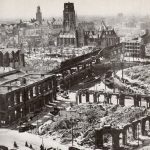 After World War II, most of Europe was in a big mess, whether it was the land,the cities and towns, or the government. There were scores of dead people around, countries and borders were torn apart, most of Europe had been “ground into a very civilized kind of pudding…and the USSR was knocking on the door to come and raid the fridge…so to speak.” Russia would have loved to sneak in and take over when they were at their most vulnerable. The people looked to the United States to figure out away to keep them safe, but not to occupy their countries, per se. That is a rather tall order, but one that the United States took seriously.
After World War II, most of Europe was in a big mess, whether it was the land,the cities and towns, or the government. There were scores of dead people around, countries and borders were torn apart, most of Europe had been “ground into a very civilized kind of pudding…and the USSR was knocking on the door to come and raid the fridge…so to speak.” Russia would have loved to sneak in and take over when they were at their most vulnerable. The people looked to the United States to figure out away to keep them safe, but not to occupy their countries, per se. That is a rather tall order, but one that the United States took seriously.
So the United States came up with Operation Gladio. Basically, they installed a secret military that would unofficially operate all across Europe. The secret military would have one and only one goal…combating communism. Little is known about this secret military, even today, because it wouldn’t be a very good secret army if we knew all about them. So, facts are pretty limited, but it’s not some crazy theory either. Their existence has been confirmed, and the network has been associated with such high-stakes super-evil events, as an attempted pope assassination, large scale bombings, and kidnappings of several high-level government officials. They were willing to do anything to fight communism…murder, extortion, even seemingly becoming communists, if that’s what it took. It turns out that the Italian branch was a particularly active group. An entirely different president of Italy, Francesco Cossiga, was involved in this ominous anti-communism secret society. The reason we don’t know more about them, even years after the end of the Cold War, is simple: crazy, crazy murders. Their secrets will follow them to the grave.
Then a new Italian president was elected. President Aldo Moro, wanted to allow communists to run for office.The still operating Gladio could not let this happen. He was suddenly kidnapped and eventually executed. 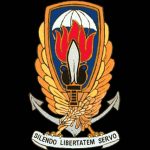 His body was found in the trunk of a car parked next to an ancient gladiatorial site. A warning to others…more than probably!! A “gladio” is an ancient Roman short sword, used in arena combat. A former colonel of Gladio operations in Switzerland decided to write a letter to the government stating that he was ready to “reveal the whole truth.” Again, Operation Gladio took action. The Gladio colonel was found dead in his home a month later. He was stabbed to death with his own bayonet. There were a series of mysterious characters written on his chest that couldn’t be deciphered. Of course, that’s not concrete evidence of Gladio’s direct involvement in these events, but these are just two brutal, worrying events that spin a web of mystery and fear that keeps further investigations from being opened. Sometimes, it’s best to let sleeping dogs lie.
His body was found in the trunk of a car parked next to an ancient gladiatorial site. A warning to others…more than probably!! A “gladio” is an ancient Roman short sword, used in arena combat. A former colonel of Gladio operations in Switzerland decided to write a letter to the government stating that he was ready to “reveal the whole truth.” Again, Operation Gladio took action. The Gladio colonel was found dead in his home a month later. He was stabbed to death with his own bayonet. There were a series of mysterious characters written on his chest that couldn’t be deciphered. Of course, that’s not concrete evidence of Gladio’s direct involvement in these events, but these are just two brutal, worrying events that spin a web of mystery and fear that keeps further investigations from being opened. Sometimes, it’s best to let sleeping dogs lie.
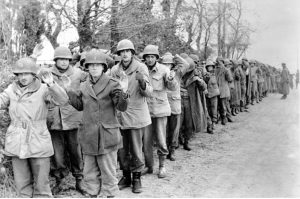 For as long as there have been wars, there have been prisoners of war. Obviously, part of the reason was to take those soldiers out of the fighting. If you are fighting against less enemy combatants, you have a better change of winning. It was a simply a part of war. Both sided took prisoners, and both sides knew that the other side was going to take prisoners. It was not the fact that prisoners were taken, but rather the way they were treated that made this part of war ugly sometimes.
For as long as there have been wars, there have been prisoners of war. Obviously, part of the reason was to take those soldiers out of the fighting. If you are fighting against less enemy combatants, you have a better change of winning. It was a simply a part of war. Both sided took prisoners, and both sides knew that the other side was going to take prisoners. It was not the fact that prisoners were taken, but rather the way they were treated that made this part of war ugly sometimes.
I’m sure that if there was work to do, it made sense to use the prisoners of war 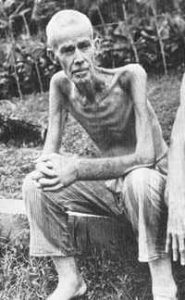 as, basically slave labor…make them earn their keep, so to speak, but often they were beaten, starved, overworked to the point of exhaustion, and basically treated like they were sub-human. Some nations were worse than others. And sometimes, the prisoners of war, weren’t even combatants, but civilians taken hostage for a variety of reasons…most of which had nothing to do with them being a danger in battle. Of course, from about the time of the Vietnam war, it became harder to tell if someone was a “combatant” or not. When children were sent out to interact with soldiers…bombs strapped to their chest…soldiers had to learn to be less than hospitable to the little ones too.
as, basically slave labor…make them earn their keep, so to speak, but often they were beaten, starved, overworked to the point of exhaustion, and basically treated like they were sub-human. Some nations were worse than others. And sometimes, the prisoners of war, weren’t even combatants, but civilians taken hostage for a variety of reasons…most of which had nothing to do with them being a danger in battle. Of course, from about the time of the Vietnam war, it became harder to tell if someone was a “combatant” or not. When children were sent out to interact with soldiers…bombs strapped to their chest…soldiers had to learn to be less than hospitable to the little ones too.
I understand the need for prisoners of war, when the war is still going on, but what is appalling is the treatment of the prisoners sometimes, and the refusal to give the prisoners back at the end of the conflict. Vietnam was also one of the times when prisoners were held long after the war. I know that sometimes the reasons for holding prisoners is that the opposing government refuses to abide by the conditions of the 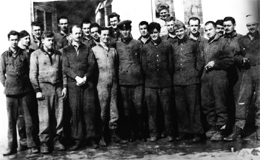 surrender of the losing side. Still, sometimes, the prisoners were held, for no legitimate reason, and for far longer than was reasonable. After World War II, the western Allies released their final prisoners in 1948, but many German POWs in the USSR were held for several more years. Most were used as slave labor in copper or coal mines, and anywhere between 400,000, and up to one million eventually died while in Russian custody. Some 20,000 former soldiers were still in Soviet hands at the time of Joseph Stalin’s death in 1953, and the last 10,000 didn’t get their freedom until 1955 and 1956 a full decade after the war had ended. That seems completely unconscionable to me, but then I’m not part of an evil nation.
surrender of the losing side. Still, sometimes, the prisoners were held, for no legitimate reason, and for far longer than was reasonable. After World War II, the western Allies released their final prisoners in 1948, but many German POWs in the USSR were held for several more years. Most were used as slave labor in copper or coal mines, and anywhere between 400,000, and up to one million eventually died while in Russian custody. Some 20,000 former soldiers were still in Soviet hands at the time of Joseph Stalin’s death in 1953, and the last 10,000 didn’t get their freedom until 1955 and 1956 a full decade after the war had ended. That seems completely unconscionable to me, but then I’m not part of an evil nation.
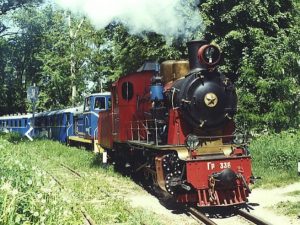 If I tell you that there exists in this world, a children’s railway, would you think of the Orphan Train, bringing children out West for adoption into families there? Or would you think of some kind of forced child labor on the railways? Either way…you would be wrong. The Children’s Railway was started in Soviet Russia in 1932. The concept is a unique one. The idea was to teach teenaged children to build and run a railroad as a way of learning the railroad trade. It was an extracurricular activity that was voluntary. Things like that aren’t offered in this country…at least not that I’m aware of. Nevertheless, I think my grandfather, Allen Luther Spencer might have enjoyed that, had it been offered in his time. I also think that my cousin by marriage, James Forseen, might have loved that since he has always loved trains, and managed to land a job with the railroad. He loved them so much that he had to have one in the wedding photos when he
If I tell you that there exists in this world, a children’s railway, would you think of the Orphan Train, bringing children out West for adoption into families there? Or would you think of some kind of forced child labor on the railways? Either way…you would be wrong. The Children’s Railway was started in Soviet Russia in 1932. The concept is a unique one. The idea was to teach teenaged children to build and run a railroad as a way of learning the railroad trade. It was an extracurricular activity that was voluntary. Things like that aren’t offered in this country…at least not that I’m aware of. Nevertheless, I think my grandfather, Allen Luther Spencer might have enjoyed that, had it been offered in his time. I also think that my cousin by marriage, James Forseen, might have loved that since he has always loved trains, and managed to land a job with the railroad. He loved them so much that he had to have one in the wedding photos when he 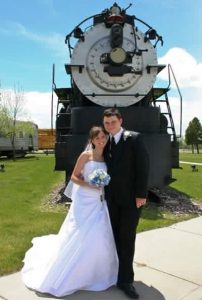 married my cousin Dani Byer Forseen. Just imagine James, if you could have worked on a railroad in high school!!
married my cousin Dani Byer Forseen. Just imagine James, if you could have worked on a railroad in high school!!
As I said, the children’s railway was a phenomenon that originated in the USSR. The first Children’s Railway opened in Gorky Park in Moscow, on July 24, 1932. It was a greatly developed activity in Soviet times. By the time the USSR broke up, there were 52 children’s railways in existence in that country. Many children’s railways are still functioning in post-Soviet states and in Eastern Europe, so obviously this is an activity that has taken off…and imagine the kids who would stay out of trouble if they fell in love with railroad work. I can envision the kids having such a great time running the railroad that they would never have the time or the inclination to get into trouble or into gangs. Their imagination would be too busy.
The children’s railway has come so far that many of them exhibit railway technology not seen anymore on the  main lines and they can be seen as heritage railways. Even though a few exceptions exist, most of the children’s railways that were built in the communist block have a track gauge of at least 600 mm (1 feet 11 5/8 inches) and can carry full size narrow gauge rolling stock. Of course, for the sake of safety and training purposes, the children’s railways are all run under the supervision of adult railroad workers, but what better way for things to be done. The children’s railways in existence these days are mostly for the purpose of tourism, but I suppose that if necessary, they could be used for other reasons. Whatever their purpose is today, I think the Children’s Railways sound like a very cool idea.
main lines and they can be seen as heritage railways. Even though a few exceptions exist, most of the children’s railways that were built in the communist block have a track gauge of at least 600 mm (1 feet 11 5/8 inches) and can carry full size narrow gauge rolling stock. Of course, for the sake of safety and training purposes, the children’s railways are all run under the supervision of adult railroad workers, but what better way for things to be done. The children’s railways in existence these days are mostly for the purpose of tourism, but I suppose that if necessary, they could be used for other reasons. Whatever their purpose is today, I think the Children’s Railways sound like a very cool idea.

